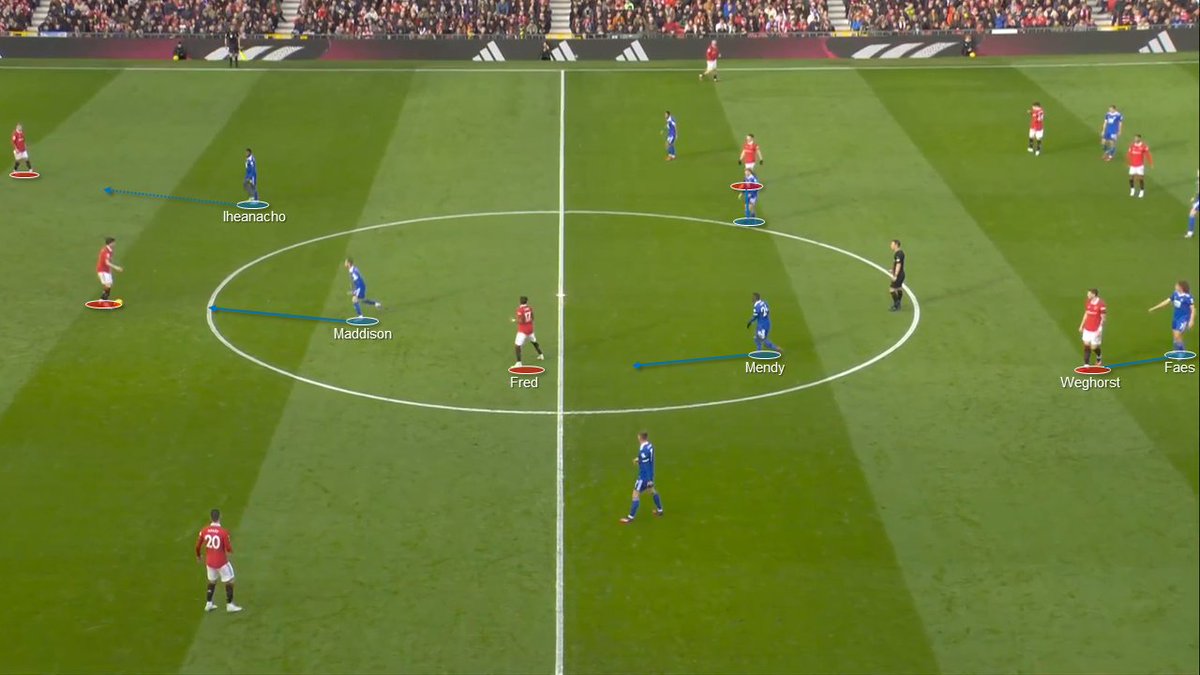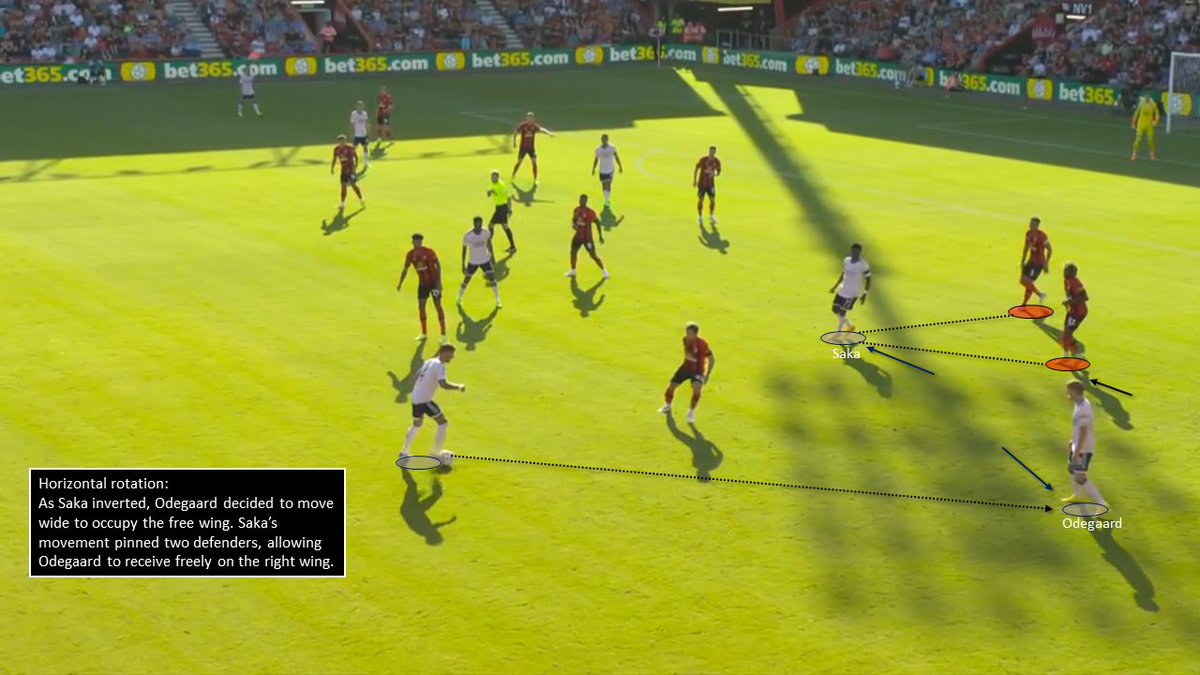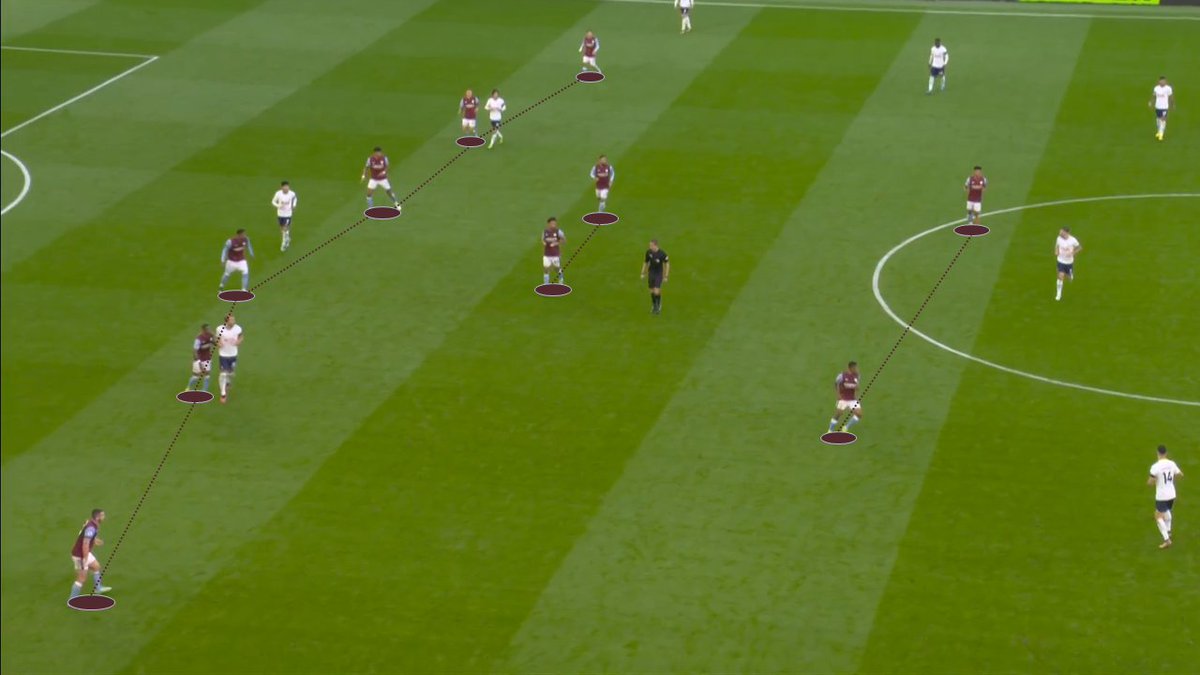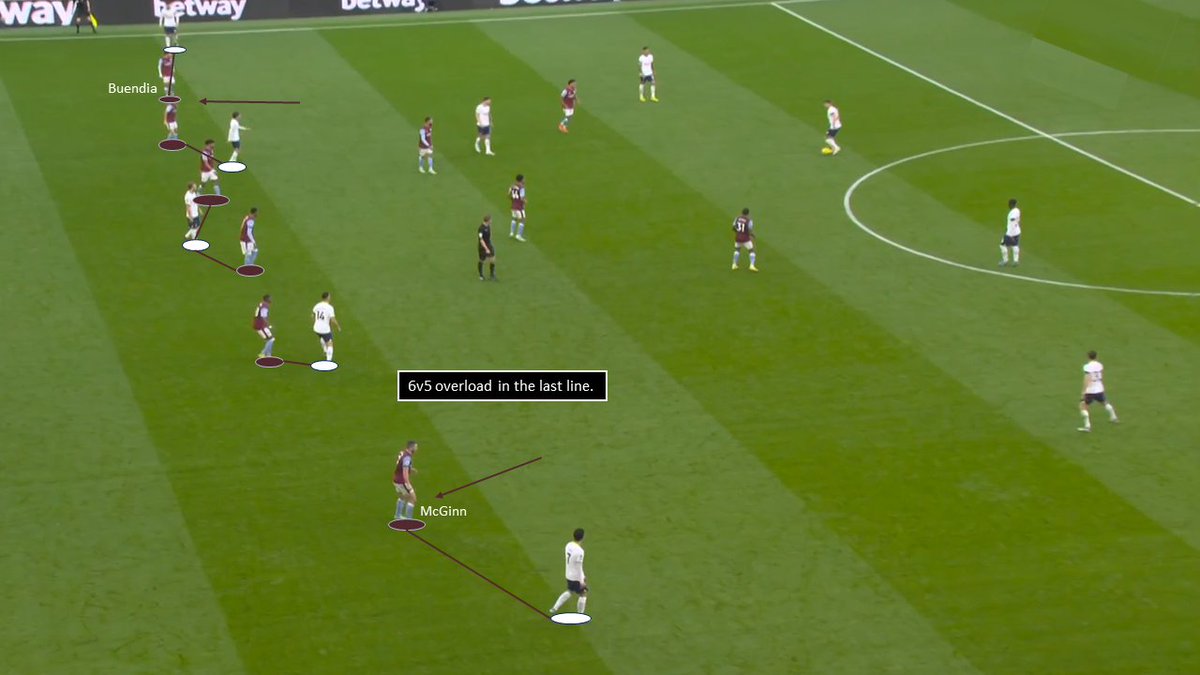Match Analysis: How Japan beat Germany #GERJPN [THREAD]
The Germans lined-up in a 3-2-5 structure in possession, using asymmetric fullbacks (Süle deeper and Raum higher). Musiala and Müller occupied the half-spaces. Japan defended in a 4-4-2 mid-block.

The Germans lined-up in a 3-2-5 structure in possession, using asymmetric fullbacks (Süle deeper and Raum higher). Musiala and Müller occupied the half-spaces. Japan defended in a 4-4-2 mid-block.

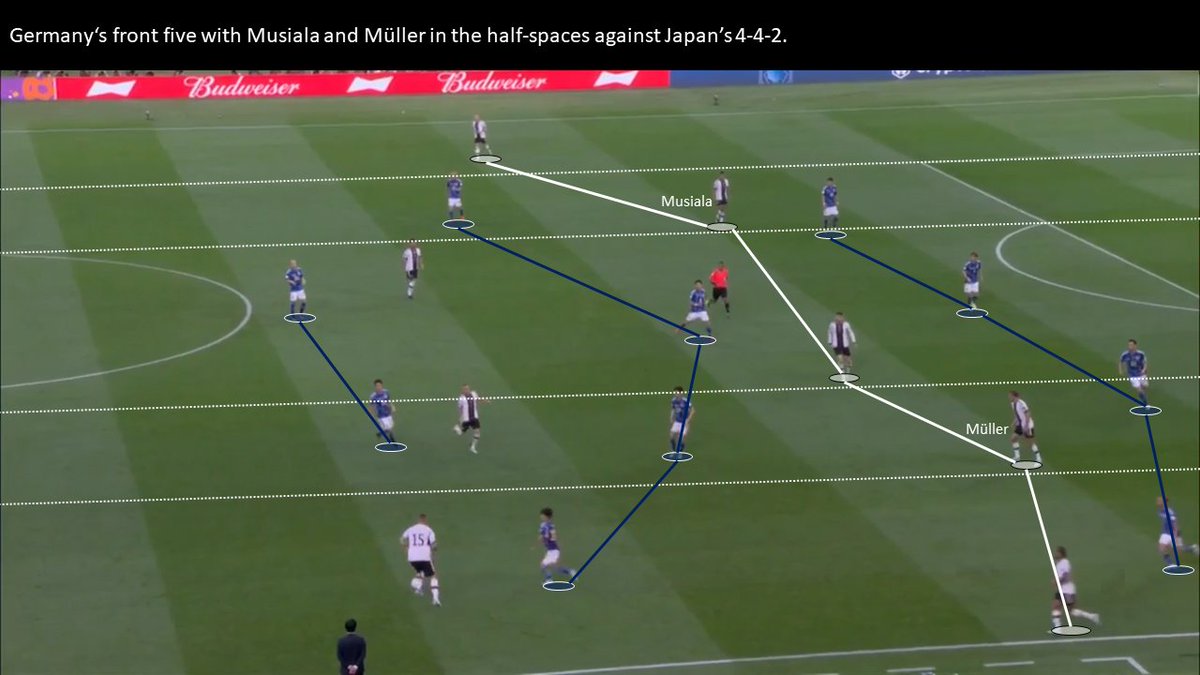
The strikers of Japan looked to restrict passes into Germany’s double pivot by using their cover-shadows. Japan’s 6s stayed in between Germany’s 10s and 6s, allowing them to press the double pivot when a striker pressed a centre back or mark a 10 in deeper zones. 





When Japan’s 6s didn’t mark the 10s, they used a different approach to defend the wings on either side. On the right, Nagatomo pressed Gnabry, while Yosibah (left CB) shifted across to mark Müller. On the left, Ito tracked back to cover Raum, while Sakai marked Musiala. 



This defensive approach worked quite well in the beginning of the game and Japan was even able to create a few chances on transitions. 



However, as the game continued, Germany improved and was the dominant side. The Germans were regularly able to progress through the centre of the pitch by finding little 2v1 situations. Müller’s situational wide positioning was vital to create these occasions. 







Moreover, the Germans created most of their chances through the left side. Raum’s higher position continuously created an overload against Sakai, as Ito could press Schlotterbeck at times or didn’t track back enough. Additionally, Musiala could free himself from Endo. 







Even though Germany scored their goal from a penalty, the Germans were able to get in behind on the left side once again after a switch and amazing countermovement between Musiala and Raum, before receiving a foul in the penalty area. 

Japan switched to a 5-2-3 out of possession in the second half, enabling them to play man-to-man and mark the players in the half-spaces more easily. Additionally, these man-orientations allowed them to have a better access and put Germany under pressure effectively. 





The Japanese pressed higher and more aggressively within this fully man-orientated setup. They regularly forced Germany to play long balls or won the ball high up the pitch themselves. 







However, that’s also a very risky approach, as it’s dependent on the players individual defensive qualities. Furthermore, everyone has to commit fully and mark tightly. If just one player leaves his man, the in-possession side has a free player with usually huge spaces.
Germany was at times able to find a free man, when Japan’s players left their men to press in a zonal-orientated approach and create a temporary overload ball-near. Moreover, the Germans could also outplay their individual qualities to create chances. 





Nevertheless, Japan mostly stayed solid defensively and also improved in possession with their switch to the 3-2-5. Key was the front five, which created a 5v4 overload against Germany’s backline and Japan could regularly outplay 2v1 situations against the fullbacks. 





Additionally, with the introduction of Doan, Kamada played as a 6 in the double pivot nominally, but continuously moved higher up in between the lines, allowing him to receive their and create even more decisional problems for Germany’s backline. 



Japan eventually scored the equalizer, which came from their 5v4 overload as well as Kamada’s higher positioning through pinning defenders. 







Germany was shocked and 10 minutes later, Asano netted in the winning goal, which once again came from Japan’s front five, which created decisional problems for the Germans and the Japanese were able to exploit the space in behind due to Germany’s poor communication. 

Conclusion:
It was a truly historic victory by Japan thanks to the tactical and personal changes made by the coach. The foundation for promotion was laid and Germany is now massively under pressure, after actually starting the game very well.
It was a truly historic victory by Japan thanks to the tactical and personal changes made by the coach. The foundation for promotion was laid and Germany is now massively under pressure, after actually starting the game very well.
• • •
Missing some Tweet in this thread? You can try to
force a refresh
























